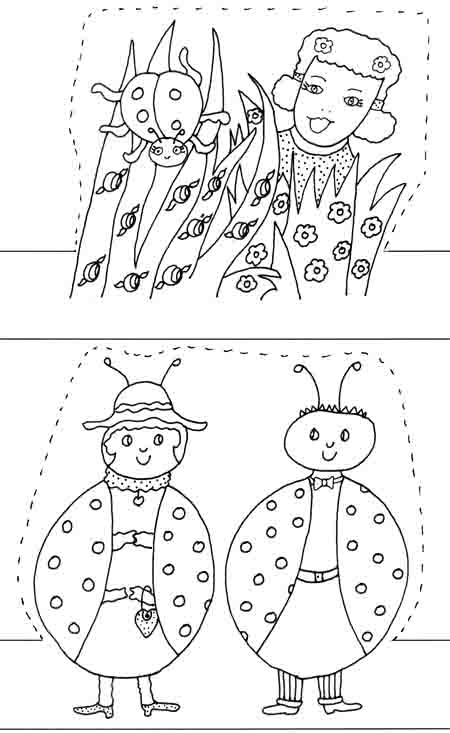Ladybug
Facts.
Ladybugs,
called ladybird beetles, belong to a large and varied group of
insects. Adults are identified by their peculiar front wings,
which are thick, hardened covers, and their black spots. When
not in flight, these covers protect the thin, folded second pair
of underwings. The main disadvantage of the heavy wing covers
is that they are slow in taking flight and therefore make the
beetle vulnerable to predators or people. They
use only their hind wings when they fly.
Ladybugs have
the typical triple body division of all insects; head, thorax,
and abdomen. Their heads are armed with small biting mouthparts.
They like to eat plant-eating aphids and other small garden pests,
like red spider mites, found on roses, cherry trees, bean plants,
and others.
Ladybugs are
a friend of the farmer and gardner who like to see them in their
fields. They are hatched from 3-300 tiny eggs which are laid near
aphid colonies. They hatch in 5-8 days and the larvae,
called grubs, proceed to eat the aphids. The mature grub
turns into a resting or pupa stage; and it emerges in 10-15
days as an adult ladybug. The whole process takes 5-7 weeks.
Top
![]()
